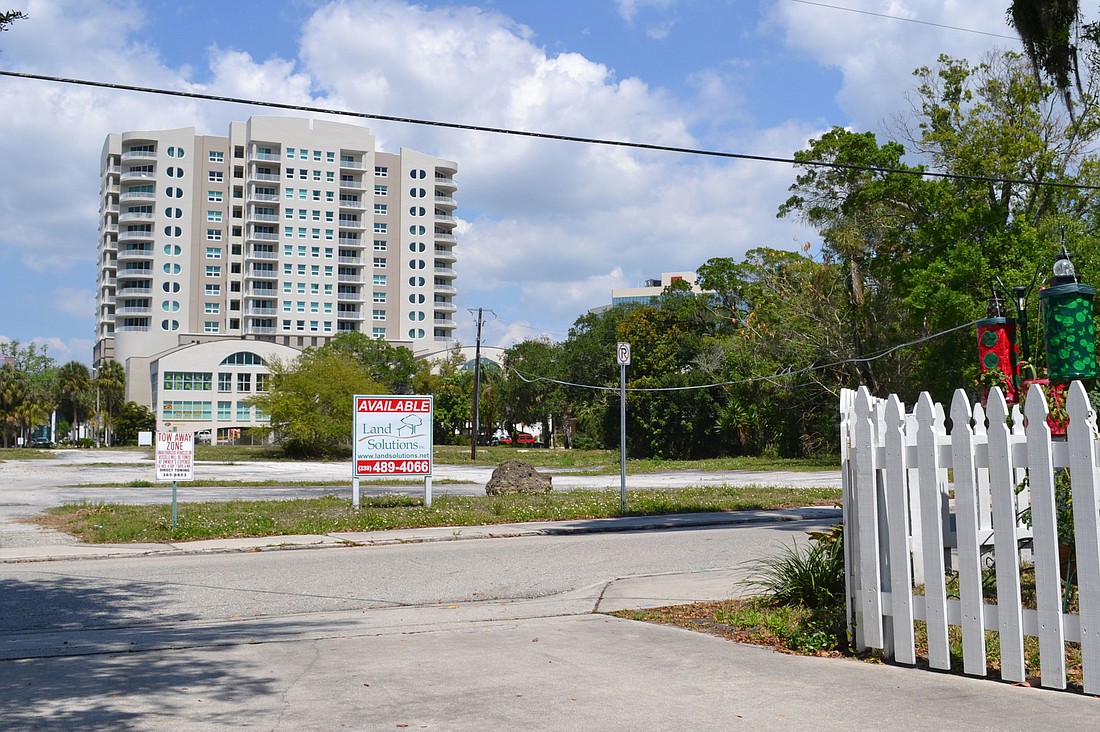- April 17, 2024
-
-
Loading

Loading

March 29, 2012
The downtown historic Laurel Park neighborhood is in the midst of an ongoing dispute over future development just outside its boundaries.
The community of more than 270 homes and small businesses that sits in the heart of downtown is wrestling both with how the community should be preserved moving forward and whether it should be more involved in the planning of future developments that sit across the street from its boundaries.
At the Sarasota City Commission’s March 5 regular meeting, Laurel Park Neighborhood Association President Jude Levy told commissioners the association received unanimous approval from residents in attendance at a November meeting to seek an overlay district that would allow Laurel Park to provide input on any large commercial project that might be proposed within 100 feet of Laurel Park boundaries.
“Large buildings deserve some scrutiny in regard to our historic neighborhood,” Levy said. “These areas around us provide a variety of opportunities for large developments, and we only want to be involved in large projects built within 100 feet of our borders that we believe should trigger a public meeting.”
Currently, city staff is not obligated to provide a public hearing for development applications that are submitted for downtown projects.
Laurel Park resident Kate Lowman also urged the commission to consider the buffer concept.
“If a large project of one- and two-story homes is being built across the street, we want to be able to participate,” Lowman said. “Cutting people out of the conversation whose quality of life will be affected by a project is a huge issue.”
But not all residents and business owners who live in Laurel Park are on board with the proposal.
Devin Rutkowski, a Laurel Park property owner for 22 years, is upset with such a concept.
Rutkowski says there are too many restrictions in the community already.
Currently, Laurel Park is not eligible for any new non-residential uses, and applicants can only build one story above ground level in Laurel Park for a total of two stories. Although Laurel Park is adjacent on three sides to downtown edge zoning, which allows up to five stories, a Laurel Park transition building requirement was put in place years ago that requires any development within 100 feet of Laurel Park property not to be any higher than three stories.
A further worry to some Laurel Park residents is that the community’s western boundary on Orange Avenue allows applicants to build commercial developments up to 10 stories in height because the area is zoned as downtown core. There are no zoning requirement protections for the neighborhood on that side.
Both the downtown edge and downtown zones also allow for non-residential uses, which further worries some property owners.
Rutkowski said if people are fearful of what may be built, they need to urge city staff to change the zoning codes.
“If I have a right to build a three-story townhouse, why would someone else have a right to force an applicant into a public hearing process and spend more money?” Rutkowski said. “What’s the benefit of this except adding another regulation?”
Rutkowski, meanwhile, is upset that Laurel Park is not a part of the downtown master plan.
“How can you plan a downtown properly without Laurel Park in it?” Rutkowski said.
Michael Taylor, the city’s general manager of Neighborhood and Development Services, said when an update to the city’s Downtown Master Plan was made in 2000, the city, after holding public hearings, opted not to include Laurel Park. The decision meant that Laurel Park isn’t eligible for non-residential uses like nearby downtown neighborhoods such as Gillespie Park.
“There are differing opinions on how the city should preserve, protect and enhance its downtown neighborhoods,” said Taylor, who emphasized a lot of thought and detail has gone into the city’s downtown designations in order to preserve existing buildings.
The underlying discourse, Rutkowski and others say, lies with many residents believing Laurel Park should strictly be a bedroom community and others saying it can’t be because it sits next to zoning areas that allow for non-residential uses.
“The problem is Laurel Park is stuck in a time warp,” Rutkowski said. “We’re a national historic district and a bed and breakfast is not even allowed in Laurel Park because it’s considered commercial intrusion. That’s just ridiculous.”
Taylor’s department has received preliminary direction from city commissioners as part of its ongoing goals and objectives to work on a potential Laurel Park buffer area for the coming year. No timetable for the goal has been given.
The buffer and commission direction for city staff, though, irks Commissioner Paul Caragiulo.
“This entire discussion and direction completely undermines and deters any future redevelopment for our city,” Caragiulo said.
Sarasota resident Diana Hamilton agrees.
“If people having their say costs an applicant more time and money, I say that’s wrong and not fair to the rest of the taxpayers in this city because we will lose that tax revenue and make it less attractive for people wanting to develop property in the area,” Hamilton said.
Update: A Laurel Park overlay district was approved by the Sarasota City Commission last month.